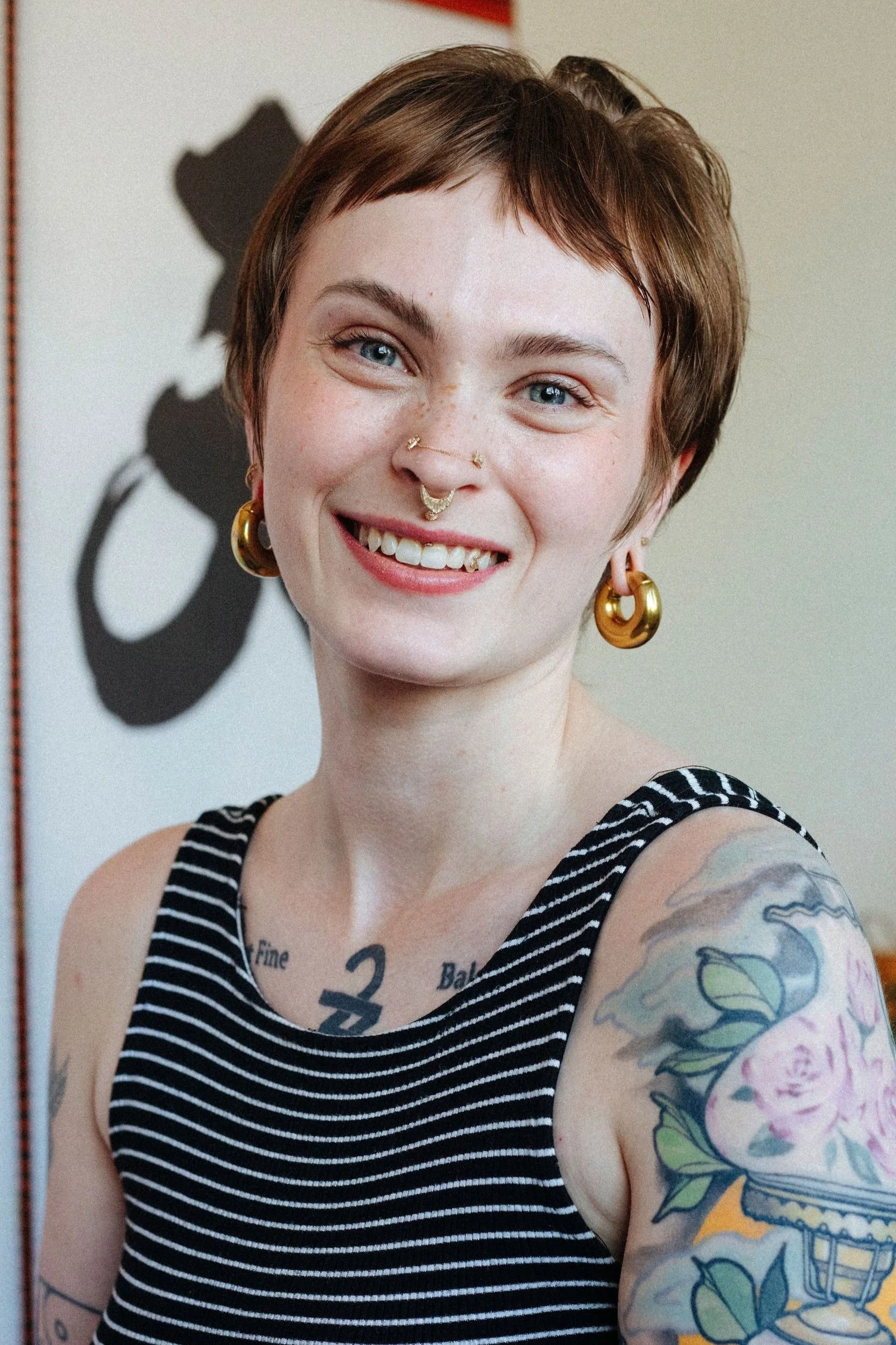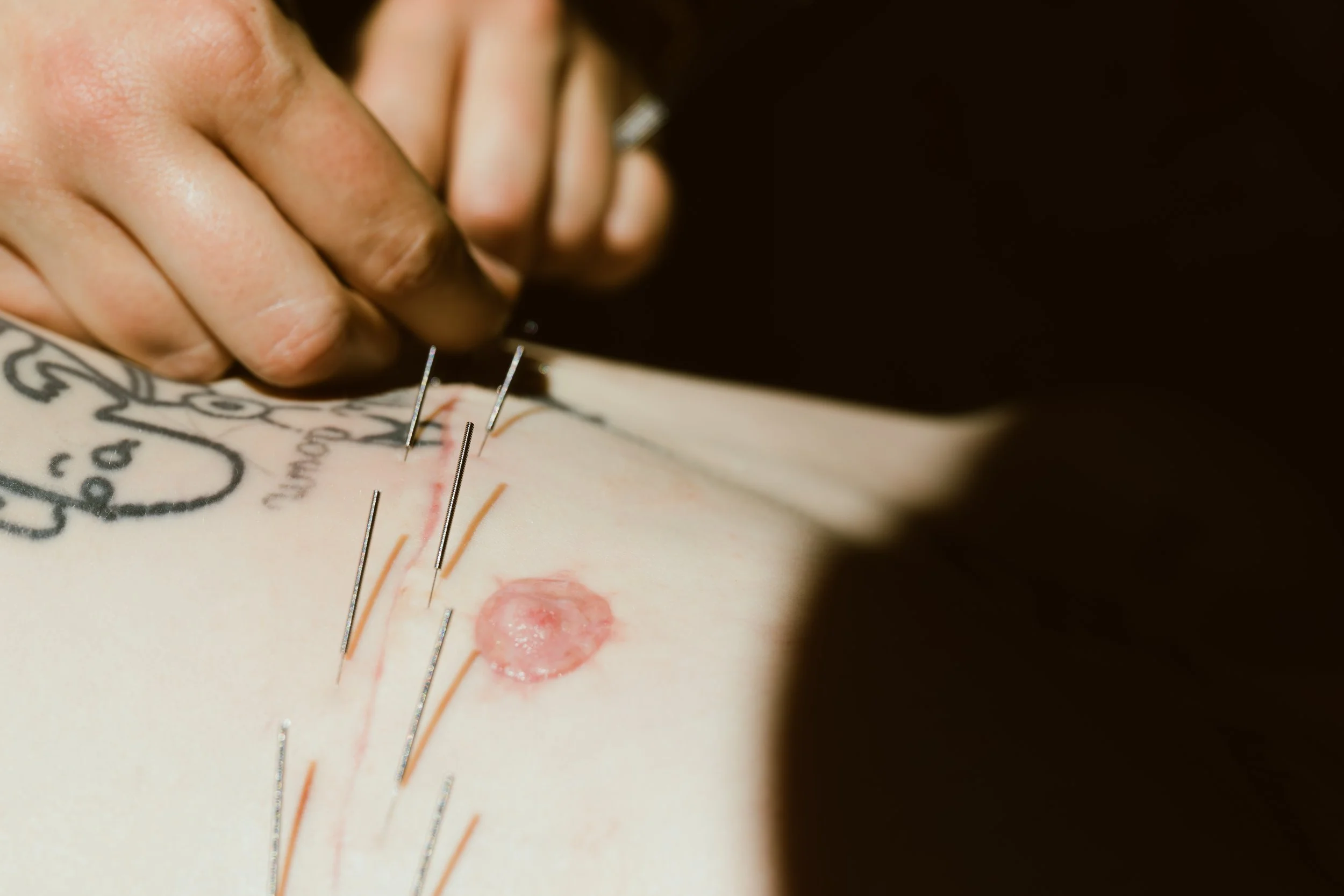Community-Centered Healing: A Queer Tradition
By Bre K. Beachy, B.A.(Psych) they/them
Remote HR Specialist
About Bre
I have been at MIHS for well over a year now, first starting with a front desk position and then transitioning to a remote position in August of 2024 to accommodate my move from Minneapolis to Chicago. I have an undergraduate degree in psychology with a focus on human mental health, and at the end of 2024, I was accepted into a top 4 school for social work, which is what prompted my move. My dissertation and much of my studies involved intersecting LGBTQIA+ identities and the disparities that exist within mental health services, healthcare, and social services for those who are part of marginalized communities.
My studies and career path are greatly influenced by my own experiences navigating systems and life as a queer/trans person. As a person with a chronic illness, many systemic issues that I have faced in adulthood happen within the healthcare system. Unfortunately, this is not a unique experience, and the difficulties only become exacerbated for those with intersecting identities like Black transgender women, for example. Nearly 1 in 6 LGBTQIA+ individuals experience discrimination in healthcare settings, and 1 in 5 patients avoid seeking medical care altogether (Casanova-Perez et al., 2022). Throughout my education and time at MIHS I noticed a pattern: historical and ongoing discrimination in mainstream healthcare systems like misgendering, lack of informed consent, and dismissal of symptoms leads many LGBTQIA+ and trans individuals to seek out integrative approaches like acupuncture, herbal medicine, and somatic practices that prioritize consent and body autonomy (Glick et al., 2018). Pride month is the perfect place and time to highlight this topic at MIHS.
Community-based Healing: Queer History
Community-based healing is much more than just obtaining care, it is about reclaiming power and agency. Many queer and trans folks turn to alternative practices when Western medicine has failed them or is inaccessible, they want to support their body holistically, and need care rooted in community, dignity, and bodily autonomy. Community-based care and mutual aid are deeply rooted in LGBTQIA+ History, and integrative healing modalities have become more than just alternatives, but acts of survival from systems that exclude and harm them. A time that highlights this is the AIDS epidemic of the 1980s - 1990s, which disproportionately affected queer and trans individuals of color (Purcell, 2021). Many faced medical abandonment with hospitals refusing treatment, state violence through the police targeting individuals living with HIV or those who were suspected to be sex workers, queer, or trans, and social stigmas like homophobia and transphobia which compounded grief and isolation for the dying and their communities. The widespread neglect forced LGBTQIA+ communities to build their own networks of survival, solidarity, and care: what we now call mutual aid and healing justice. Queer-led groups like ACT UP, GMHC, and Lesbian Avengers created radical infrastructures that housed the sick and dying, delivered meals, fundraised for meds, provided education on harm-reduction and prevention, and provided emotional and spiritual support. Many turned to acupuncture, nutritional support, and herbal treatments to reduce symptoms and side effects of early HIV treatments (Liu et al., 2005). The response to AIDS has taught us that healing is political, especially when done outside the medical-industrial complex, and community-based integrative healing remains a lifeline for those pushed to the margins.
Integrative Care as a Continuation of Queer and Trans Resilience
Integrative practices honor the complexity and wisdom of queer and trans bodies, communities, and cultural histories when they are trauma-informed, culturally aware, and community-rooted. Western medicine has historically pathologized LGBTQIA+ identities like labeling queerness as mental illness (e.g., until 1973 in the DSM), framing gender dysphoria as a disorder, and prioritizing “normalization” over autonomy. On the other hand, integrative health sees the body as wise, not broken. Practices like somatics, acupuncture, and energy healing work from the belief that healing is not about erasing identity, but restoring balance and connection. The body stores emotion, memory, and trauma, and the body knows how to heal if given support, safety, and time. There are many integrative health spaces that offer sliding-scale or donation-based models (i.e., Pay from the Heart and Community Acupuncture), consent-based, collaborative care, and peer-led or grassroots organizing, which mirrors how queer and trans/marginalized communities have always shown up and cared for one another.
Body-Based Healing in Queer/Trans Lives at MIHS
I started visiting MIHS as a patient after a queer-coworker of mine highly recommended that I get cupping with Said to help with my chronic pain, and visiting this space was the first time that care had ever felt affirming and that my health concerns were heard. I went into this space expecting relief from chronic pain, but I kept leaving appointments and classes with a connectedness and alignment with my mind and body that I had never really felt before. My journey within integrative medicine has given me my physical wellness back, guided my journey with gender-affirming care, and made me a better advocate for myself and others. Working within the space has also given me access to an abundance of knowledgeable individuals to bounce questions and ideas off of.
*Keep in mind this does not cover all experiences or modalities, and includes personal exposition that does not apply to everyone.*
Emily Nyberg DCM, Dipl. Ac., LAc (she/they) is a licensed acupuncturist and holds a Doctorate in Chinese Medicine. Their practice centers on finding the right combination of approaches to best support facilitating your health and wellness, including acupuncture, microneedling, and needle-free treatments, cupping, gua sha, moxibustion, electrical stimulation, breathwork, and food and herbal therapy. Related to LGBTQIA+ care, acupuncture has been used to treat trauma, anxiety, hormone-related symptoms, and dysphoria and has recently become more popular in the Western world (Oh et al., 2018). In April, I had top surgery and have been receiving acupuncture to help support my healing and changes in my body here in Chicago, but I was lucky enough to sneak in an appointment with Emily when driving through Minneapolis a couple of weeks ago. Surgeries disrupt the body’s natural qi (read more about qi here) and blood flow. This blockage often leads to pain, bruising, and pressure around the incision area. During my visit, she utilized the "Wei Ci" technique around my scarring, which can help improve skin elasticity and reduce discomfort associated with scar tissue. This involved surrounding acupuncture needles around the scarring, and unlike any other acupuncture treatment I had up until this point, I was told that I could move my arms, as some movements (in certain techniques) can help with fascial release.
Derrick Lundberg, CMT (he/him) expands on myofascial release and the topic at hand: “We definitely do extensive work around reconstructive surgeries, and symptoms associated with scar tissue. Myofascial release brings fluidity to our solidified scars frozen in time and space, unable to process the moment, we carry a reminder that our healing is still possible. We end up finding a lot of themes relating to personal identity and exploring some of the experiences that led to their journey. Integrating the parts of ourselves that were not able to be fully embodied at the time of experience is what myofascial release is all about.”
Rebekah LaVone RN, PHN, HNB-BC (she/her) is a trauma-informed and is a practitioner of Trust-Based Relational Intervention. She utilizes hands-on therapy (and hands-off) in her practice of Reflex Integration for Stress Resilience with both adult and pediatric patients. When asked about health disparities among LGBTQIA+ individuals, it sparked this conversation:
“When I think about this topic, it makes me think of all the disparities when it comes to this marginalized population. Inherently, there is so much trauma (bullying, abuse...), which can have significant effects on mental health. Specifically, the suicide rate among this group is higher than others.”
Numerous studies have shown that lesbian, gay, and bisexual youth have a higher rate of suicide attempts than do heterosexual youth. According to a Trevor Project 2023 survey, 18% of LGBTQ youth have attempted suicide, a rate 2 times higher than the general teenage population. This does not mean that suicide is inherently more common for these individuals, but mental health effects are exacerbated by social, systemic, and environmental stressors. “Suicide has such a devastating effect, and there needs to be more resources available to support well-being. One quote I think of often is:
“The expectation that we can be immersed in suffering and loss daily and not be touched by it is as unrealistic as expecting to be able to walk through water without getting wet.”- Dr. Rachel Naomi Remen
Many trans individuals have complex relationships with their body and trauma, and as a trans individual with a background in psychology, it is clear that trauma is not just a piece of the past, but a current imprint of fear that lives within the individual, affecting their physical and psychological well-being. When we experience chronic stress and trauma, our body is the master at adaptation. For many individuals, it takes a combination of approaches to work through trauma. With her nursing background, Rebekah felt as though there was a missing link in trauma care regarding the physical body, and understanding Dr. Masgutova's work about trauma from a neurophysiological background is what opened her eyes to the necessity of being involved in a therapy that recognizes the foundation that our reflexes play within our trauma responses.
“My modality supports your nervous system. From a somatic approach, it helps to release stress/trauma in a gentle, non-invasive way that is not cognitive. This has a way of releasing your muscles and tendons from patterns that your body gets so good at performing. These patterns are not an efficient way for your body and brain to function. When you release your body from these stuck patterns or compensated reflexes, it is able to function on a higher level, which allows you to be able to be present in the moment without feeling on edge. Your brain is able to properly filter out unnecessary sensory information. Your capacity within your nervous system increases, and you become more resilient.”
Conclusion
At MIHS, we have many perspectives, techniques, and personalities, but a quality each practitioner has is showing up for their patients and meeting them where they are at. Community, access to resources, and checking our personal bias are essential to creating an equitable space. Our mission at MIHS is to empower individuals to take charge of their health and well-being, regardless of their financial status, and we are committed to its continual improvement. As our community grows, so too does our commitment to providing accessible, effective, and affordable healthcare solutions. Especially in our current political atmosphere, it is crucial that there is a commitment to inclusion in the treatment room.
Healing is not just individual: it’s relational. It’s political. It’s communal.
It’s an essential part of LGBTQIA+ History.
Thank you for reading, and happy Pride Month!
Bre K. Beachy, B.A.(Psych) they/them
References
Casanova-Perez, R., Apodaca, C., Bascom, E., Mohanraj, D., Lane, C., Vidyarthi, D., Beneteau, E., Sabin, J., Pratt, W., Weibel, N., & Hartzler, A. L. (2022). Broken down by bias: Healthcare biases experienced by BIPOC and LGBTQ+ patients. AMIA ... Annual Symposium proceedings. AMIA Symposium, 2021, 275–284.
Glick, J. L., Andrinopoulos, K. M., Theall, K. P., & Kendall, C. (2018). "Tiptoeing Around the System": Alternative Healthcare Navigation Among Gender Minorities in New Orleans. Transgender health, 3(1), 118–126. https://doi.org/10.1089/trgh.2018.0015
Liu, J. P., Manheimer, E., & Yang, M. (2005). Herbal medicines for treating HIV infection and AIDS. The Cochrane database of systematic reviews, 2005(3), CD003937. https://doi.org/10.1002/14651858.CD003937.pub2
Oh, J. Y., Kim, Y. K., Kim, S. N., Lee, B., Jang, J. H., Kwon, S., & Park, H. J. (2018). Acupuncture modulates stress response by the mTOR signaling pathway in a rat post-traumatic stress disorder model. Scientific reports, 8(1), 11864. https://doi.org/10.1038/s41598-018-30337-5
Purcell D. W. (2021). Forty Years of HIV: The Intersection of Laws, Stigma, and Sexual Behavior and Identity. American journal of public health, 111(7), 1231–1233. https://doi.org/10.2105/AJPH.2021.306335
The Trevor Project (2024) U.S. National Survey on the mental health of LGBTQ+ Young People
Further Resources to Consider
“Let the Record Show” by Sarah Schulman (ACT UP oral history)
“Body of Work” by Melissa Febos (explores somatics and queer body memory)
Queering Herbalism (zine & blog)
The work of Healing Justice Podcast and Kindred Southern Healing Justice Collective
Gender and Sexuality in Chinese Medicine by Catherine J. Lumenello, M.Ac







